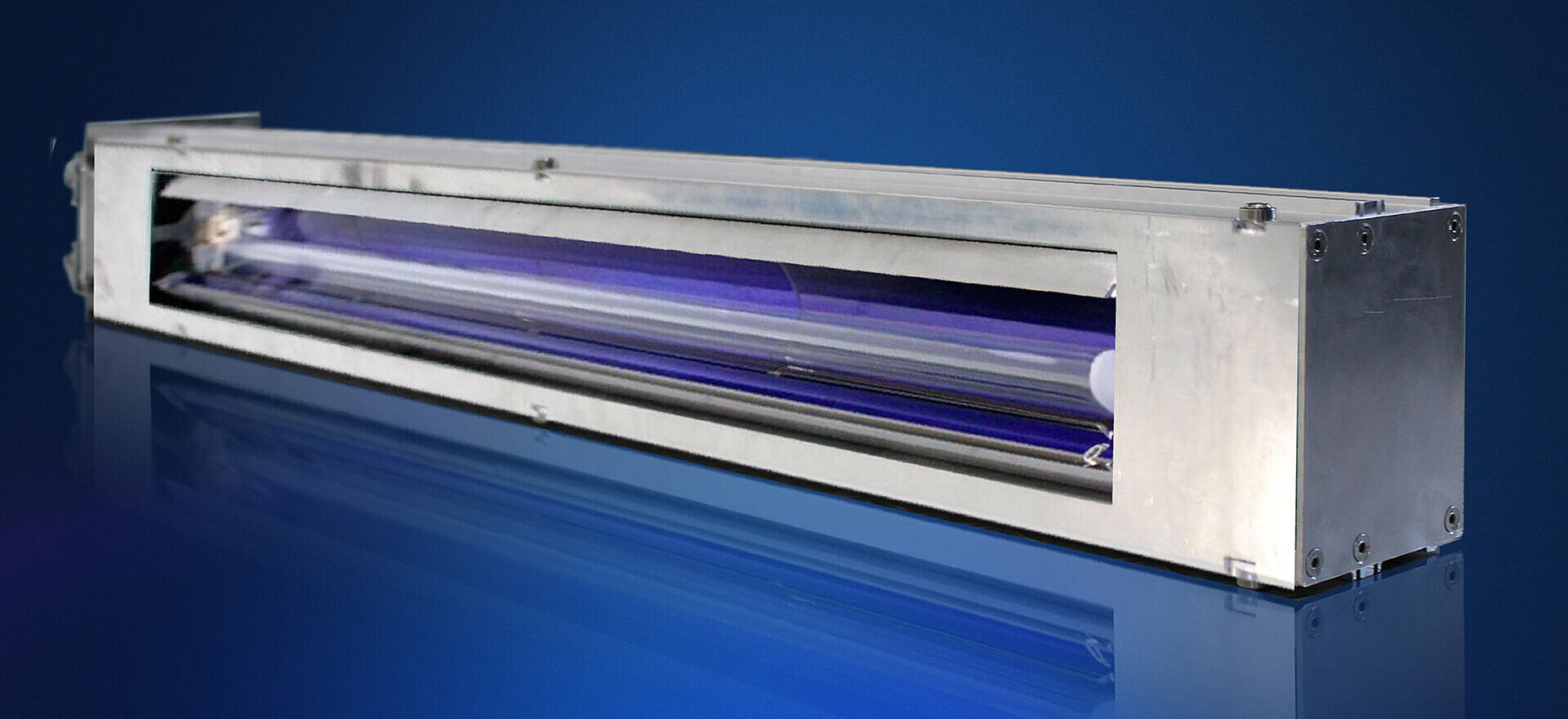
Conventional drying vs. UV drying
(=UV curing)
The UV curing process uses UV energy and light from the visible light spectrum in wavelengths from 200 to 480 nm. UV energy "cures" inks and varnishes in a fraction of a second. A UV system consists essentially of the following components: UV lamps, reflectors, lamp housings, a cooling system and an electronic operating and control system. A range of additional options can then be added as required. We manufacture to the highest quality standards with precise production of individual components, meticulous calibration of the UV units and the seamless integration of the UV system into the production process.